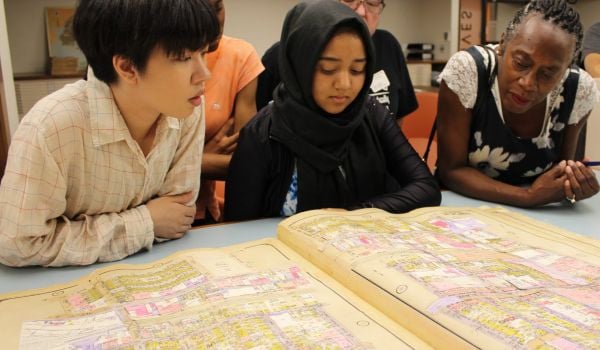In Anthony Flint’s prescient new book Wrestling with Moses, Jane Jacobs tenaciously stands up against the rigid anti-urban dogmas of her era. Poignant passages illustrate how viscerally the good-old-boy’s network of elite planners and architects inveighed against her iconoclastic 1961 manifesto, The Death and Life of Great American Cities. Lewis Mumford called her a “sloppy novice” and likened her glorified neighborhood activists to “schoolgirl howlers.” Robert Moses, the antagonist in Flint’s story, called Death and Life “intemperate and inaccurate.” Her attacks on each of them no doubt poured gasoline on their vitriol, but there were also bigger ideological issues at stake. This was the age of urban renewal. Its single-use, low density gospel packed as many pews as does the current consensus for mixed-use and high density.
Moses tried to make core cities competitive in the age of the automobile. In his view bottom up activism like Jacobs’s could only obstruct the manifest path of progress. He used his ill-gotten power to ram through massive roads and bridges, the Lincoln Center, Shea Stadium and the UN building. But in the end wily grassroots maneuvering ground his political machine to a stop. Lower Manhattan’s team of savvy organizers, including Jacobs, blocked his plans to demolish sizable parts of Greenwich Village and Soho for drab housing and a mammoth expressway. Another campaign stopped a planned thoroughfare through the kinetic heart of Washington Square. More importantly, we learn at the end of Wrestling with Moses that Jacobs’s side wins the battle of ideas. Planners now recognize the value of old buildings, vibrant sidewalk life and residential diversity. Residents should have the most say over what to build or demolish, not so-called “power brokers” like Moses.
So far Flint’s conclusions are what we might expect from a book written during this purported Jacobsean age. Wrestling with Moses in fact reads like hagiography for Jacobs, but Flint surprises us in the epilogue by questioning her legacy. Modern incarnations of neighborhood activism, we learn, can devolve into crazed efforts to preserve even the worst aspects of city neighborhoods. Getting needed things done amidst the growing din of community voices might require someone like Moses after all. A number of reviewers reached the same conclusion. As the San Francisco Chronicle’s John King put it: “If someone with his mastery of political dynamics had been placed in charge of the seismic upgrade to the eastern span of the Bay Bridge, the new structure might be open by now.”
As strange as it may seem, this one-sided dual biography elicited sympathy for its villain. Reviewers like King seem to miss Moses’s can-do attitude in this era of can’t-do government. Without people of action like Moses, they say, American cities are saddled with NIMBY power run amok, preventing even reasonable development. If that’s true, it’s only because there are such obscene concentrations of wealthy residents in major cities that politicians can’t ignore the preferences of their privileged neighborhoods. Even Washington Square in the 1950s had Eleanor Roosevelt to call attention to its plight. By contrast there are poor neighborhoods with no such political efficacy. These are the places where banks foreclose and evict with impunity, sheering the social fabric that Jacobs thought was so important. Why haven’t these communities been able to generate the same kind of collective resistance to keep their homes?
This all seems cruel to me after reading Flint’s tale of how collective action can stand up to concentrated power. This essential moral to his story seems barely applicable to today’s indifferent, dehumanizing political economy. The irony in this case is that extreme gentrification wound up displacing lower Manhattan’s middle class anyway. When the city threatened to bulldoze residents out of their homes it at least offered fair targets like Moses, who despite all his efforts couldn’t slink away from public accountability. Today’s leading cities force ordinary citizens to compete for housing amidst the vagaries of global real estate markets. Manhattan, where the average home costs a million dollars, has roughly 290,000 people below the poverty line who must somehow find nearby roofs over their heads or move out to the periphery. From there many of them will tap into a Manhattan’s ample low-paid service sectors through long commutes, continuing to serve a city that can’t provide them a few affordable square feet.
Against whom do they protest?















